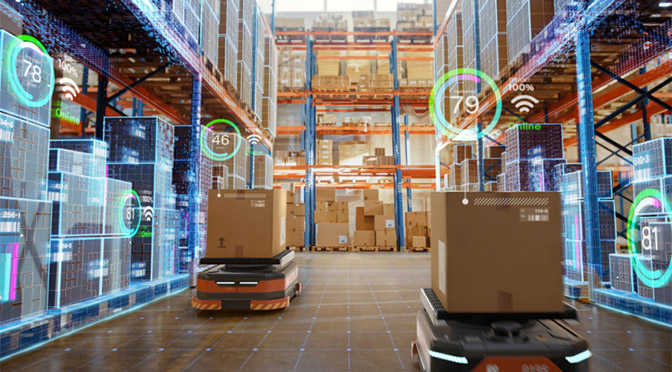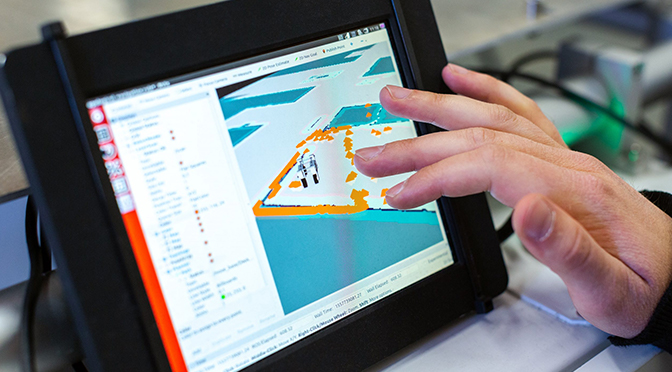Riding The Cloud – The Future Of Transportation Management System
Get In Touch
Your information is protected by our Privacy Policy and Terms of Use.
Our Offices
E 237, First Floor, Phase VIII B Sector-74,
Industrial Area, Mohali-160071, Punjab
Phone: +(91) 93010-10197
6470 East Johns Crossing, Suite 160
Johns Creek, GA 30097
Phone: +1(470)-268-9868
531A, Upper Cross Street, #04-95,
Hong Lim Complex, Singapore - 051531
Phone: +1(470)-268-9868
- Solutions For
- Solutions
- Services & Expertise
- Case Studies
- Insights
-
Get In Touch
Get In Touch
Your information is protected by our Privacy Policy and Terms of Use.
Our Offices
Zapbuild Technologies Private LimitedIndia
E 237, First Floor, Phase VIII B Sector-74,
Industrial Area, Mohali-160071, Punjab
Phone: +(91) 93010-10197Zapbuild Technologies (US) LLC United States
United States
6470 East Johns Crossing, Suite 160
Johns Creek, GA 30097
Phone: +1(470)-268-9868Zapbuild Technologies (S) PTE LTDSingapore
531A, Upper Cross Street, #04-95,
Hong Lim Complex, Singapore - 051531
Phone: +1(470)-268-9868
- Learning Management System
- Command and Control Center
- Transportation Management
- Warehouse Management
- Fleet Management
- Supply Chain Management
- Document Contracts Management
- Load Board Platform
- Route Optimization
- Electronic Proof Of Delivery
- Freight Exchange Platforms
- Customer Relationship Management
- Data Analytics and Business Intelligence
- Logistics Aggregator
- Crowdshipping Marketplaces
- Reverse Logistics Marketplace
The Ultimate Guide to How a Logistics Management System Works

Advancements in technology are ever-evolving and bringing up new possibilities. Changes are generally positive, but they often cause chaos in logistics and the supply chain, even if they are for the better. But as logistics have improved, so have the ways that supplies, commodities, freight, sales orders, inventory, and manufacturing are tracked.
When faced with rising demand and more complicated operations, logistics soon shifted to a more efficient and rapid method. An effective system that controls the process flow to ensure that the right product reaches the client in a timely way.
With the help of Logistics software, the backbone of logistical operations is compressed, eliminating potential complications. Research shows that companies that invest in logistics management systems enjoy greater returns than those that don’t. Also, they’ve seen major improvements in the quality of the service they get in production and distribution.
What is Logistics?
Logistics is the study and practice of coordinating the flow of goods, services, and information through a supply chain, from their points of origin to their final destinations. Depending on their customers’ needs, different logistics firms perform a specific supply chain function or all of them. This part of the supply chain analyses the procedures a single business follows as it acquires raw materials and transforms them into finished goods.
What Are Logistics Management Systems?
Logistics management systems are software tools that help streamline and improve supply chain operations, including shipping, receiving, and warehousing. A logistics management system manages the flow of data, products, and services throughout the supply chain, which is the path a product travels from the factory to the customer’s hands. Products like food and equipment components and data are examples of logistical goods.
Providing excellent customer service is the top priority of every effective logistics operation. A logistics management system can boost a company’s reputation and client loyalty by providing prompt, high-quality, and accurate service. Businesses can see more of what’s happening in the supply chain, save money, and optimize their logistics operations.
How Does a Logistics Management System work?
The following points describe how some of the activities under the logistics umbrella work in a logistics management system:
Order Processing
Several tasks make order processing, all directly connected to the logistics system’s information flows. Customers may have to submit an order form to request the goods. These orders are sent and verified. The next step is checking the customer’s credit and ensuring the requested products are in stock. The goods are then collected from storage (or manufactured), packaged, and delivered with the appropriate shipping paperwork. Last but not least, clients must be updated on the development of their orders.
Historically, order processing has taken considerable time (up to 70% of the whole order-cycle time). However, improvements in electronics and IT have allowed it to flourish in recent years. Scannable barcodes let stores quickly locate stockouts and reorder items. Laptops and modems have allowed salespeople to place orders instantly and monitor stock levels. Thanks to EDI, businesses may place orders for industrial supplies electronically, bypassing the need for paper forms at either end of the transaction.
Warehousing
The term “warehouse” is used to describe the practice of securing and storing products, materials, or data in a designated location. It’s essential for every business that deals with production, shipping, or distribution. Warehouses provide:
- A safe and secure location for the storage of goods.
- Allowing businesses to keep tabs on their whereabouts and age.
- Arrival.
- Availability of their inventory.
The products are stored in a warehouse until a buyer places an order via the company’s website. Products for brick-and-mortar stores are often held in warehouses until they are needed.
Inventory Management
The term Inventory refers to the items or materials a firm expects to sell to clients for profit. Inventory management is an important part of the supply chain since it monitors the flow of goods from the factory to the warehouse to the retail outlet.
The primary focus of inventory management is having sufficient quantities of the appropriate resources. Part of this process is being able to see what you have on hand so you know when to purchase more, how much to order, and where to put it. The basic steps of inventory management include the following:
- Purchasing Inventory: When a business buys raw materials or other components, it moves them to a warehouse.
- Storing Inventory: When a business stores goods, they do it in anticipation of future demand. This may refer to either unprocessed materials or completed products stored in a warehouse or other facility.
- Profiting from inventory: When a business has complete control over what customers get. The process of releasing completed items for shipment to clients and fulfilling orders.
Freight Transportation
The modern economy relies heavily on freight transportation since it permits production and consumption to occur hundreds or thousands of kilometres apart. Since there are more potential customers, international manufacturers are likely to engage in head-to-head rivalry. At the same time, domestic firms are more likely to take advantage of economies of scale. As a bonus, businesses in rich nations may take advantage of the cheaper manufacturing wages in developing nations. To the delight of consumers everywhere, perishable items may now be sold globally.
As much as two-thirds of the overall cost of logistics may be attributed to freight transportation, which has a direct bearing on the quality of service provided to customers. This is why logistics system management relies heavily on transportation planning. There are three different transit options available to manufacturers and wholesalers:
- The business may use its own fleet of privately owned or leased automobiles (private transportation).
- A contract may assign material transport responsibilities for direct shipments to a carrier (contract transportation).
- The organisation may fulfil many clients’ transportation requirements by contracting with carriers sharing resources (vehicles, personnel, terminals) (common transportation).
Fleet Management
The term “fleet management” describes the administration of transportation assets such as automobiles, planes, trains, and ships. Finance and leasing, licensing and compliance, vehicle maintenance, accident management, and supply chain management are all possible features.
Those businesses that depend on transportation to function may mitigate or even eliminate the dangers associated with their vehicle investment via careful fleet management. As a result, production and efficiency are increased, staffing and transportation expenses are decreased, and governmental standards are met.
Order Fulfillment
During order fulfilment, items are kept in a warehouse, packed, and sent to clients. In its broadest meaning, order fulfilment covers everything from when a client puts an order to when they get their shipment. Businesses can fulfil customer orders in-house or via third-party fulfilment partners.
In-house order fulfilment occurs when a business handles its storage and transport processes, often with its own employees, machinery, and physical location. It’s perfect for well-established firms or any enterprise that values absolute autonomy over how it conducts its daily operations. In contrast, when businesses outsource fulfilment, they contract with a third party to handle their incoming orders. Some businesses may find this more efficient than taking care of these tasks internally.
Conclusion
The logistics firm will be able to fix all of its issues with the help of the appropriate technology. Employing a team of software development experts might be beneficial if your business has to create software for logistics management systems. You can run your logistics management operations more efficiently and generate more money with the right software, provided it has the necessary capabilities. Get in touch with the logistic software professionals at Zapbuild to learn how to create game-changing logistics software for your organization.

Looking to build future-ready technology solutions for your transportation or logistics business? Connect with our experts for a free consultation today connect@zapbuild.com
Categories
Trending


5 Ways AI is Revolutionizing Supply Chain Management

What is a Fleet Management System?
Subscribe to our newsletter
Related Insights

Logistics
From Paper Trails to Real-Time Insights: How Data-Driven Logistics is Transforming the Industry

Logistics
Predictive Intelligence for Optimized Logistics: From Reactive to Proactive Decision-Making

Logistics
5 Key Reasons You Should Invest in a Logistics Management System

Logistics
Logistics Management Software : Important Things You Should Know
Connect with Our Experts
Take the first step toward the digital transformation of your Transportation and Logistics business.
Get a Free Consultation with Zapbuild’s technology experts today.